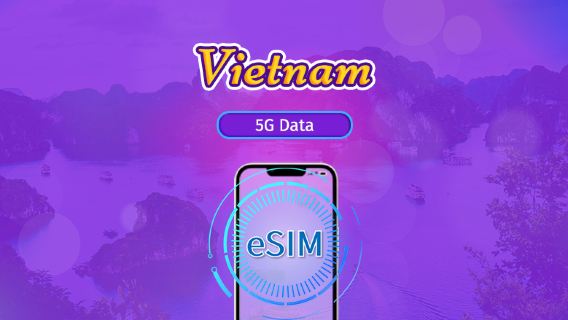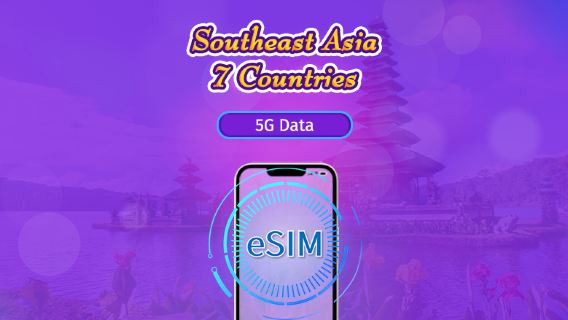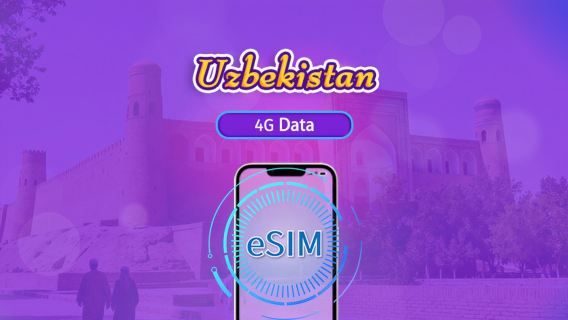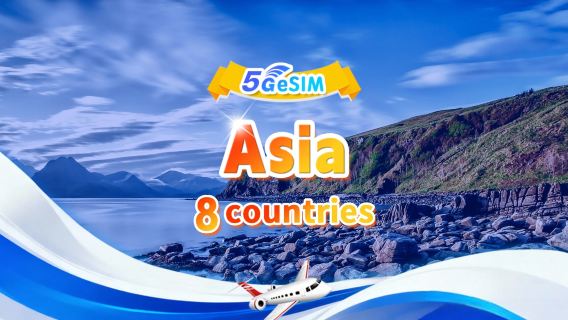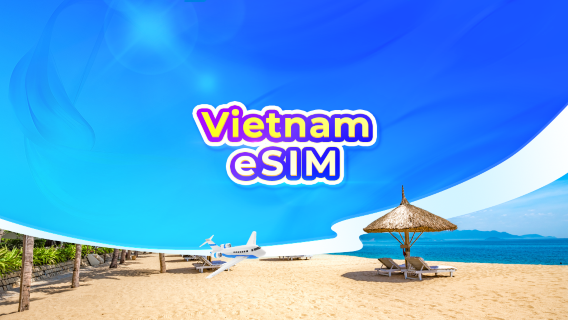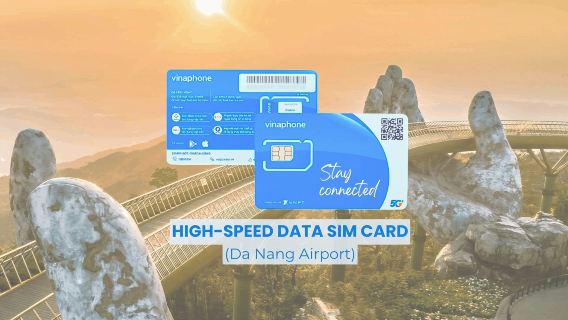
When preparing for a trip to Vietnam, understanding the Vietnam Power Plug and socket system is essential for staying connected. This guide provides you with everything you need to know about Vietnam Power Plug, including adapters and travel tips. Knowing the specifics of the Vietnam Power Plug can help you avoid any inconvenience while traveling, ensuring that your electronics are ready to use. Be sure to pack a suitable Vietnam Power Plug adapter to match the local power outlets and keep your devices charged throughout your stay.
Types of Power Plugs in Vietnam

Vietnam uses a variety of Vietnam Power Plug types, primarily operating at a voltage of 220V and a frequency of 50Hz. If you're planning a trip or moving there, understanding the types of Vietnam Power Plug used can help ensure your devices stay charged and functional. Here’s a detailed guide to the types of Vietnam Power Plug in Vietnam. Knowing the correct Vietnam Power Plug type will help you determine whether you need an adapter or voltage converter, making your trip more convenient.
Feature | Type A (Common in Vietnam) | Type C (Most Common in Vietnam) | Type D (Less Common in Vietnam) |
Shape of Pins | Two flat parallel prongs | Two round pins | Three round pins in a triangular configuration |
Pin Size | Small and flat | Small and round | Larger and round |
Voltage | 220V (same as Australia) | 220V (same as Australia) | 220V (same as Australia) |
Frequency | 50 Hz (same as Australia) | 50 Hz (same as Australia) | 50 Hz (same as Australia) |
Grounding Pin | No grounding | No grounding | Yes, grounding pin present |
Compatibility with Australian Plugs | Less common in Vietnam, mainly for older or low-power devices | Most compatible with Australian plugs (Type I) | Less common in modern outlets |
Safety Features | Minimal safety due to lack of grounding | Minimal safety, no grounding | Higher safety due to grounding pin |
Adapter Needed for Australian Travelers? | Yes, as Australia uses Type I plugs with a grounding pin | Yes, but Type C is quite common and may already fit in many outlets | Yes, requires an adapter or plug converter |
Common Uses in Vietnam | Found in older outlets or for small, low-power devices | Common for laptops, chargers, and other personal electronics | Found in older buildings or specific appliances |
Type A (Common in Vietnam)
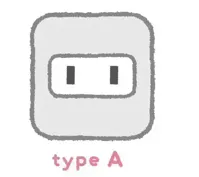
- Shape of Pins: Two flat, parallel prongs.
- Voltage and Frequency: 220V and 50Hz, which matches Australia's voltage and frequency.
- Grounding Pin: No grounding—this is one of the key safety considerations, as devices with no grounding can be more susceptible to electric shocks.
- Adapter Needed: Yes—you will need an adapter since Australia's Type I plug has a grounding pin, while Type A does not.
- Usage: Type A is typically found in older outlets or for low-power devices like phone chargers, but it is less commonly used in modern outlets in Vietnam.
Type C (Most Common in Vietnam)
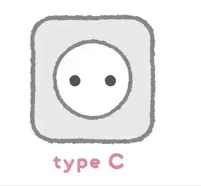
- Shape of Pins: Two round pins.
- Voltage and Frequency: 220V and 50Hz—same as Australia's system.
- Grounding Pin: No grounding—while it's commonly used for personal electronics, it doesn’t have the extra safety feature of grounding.
- Adapter Needed: Yes—even though Type C is compatible with Australia’s Type I in terms of voltage, the physical shape and pin configuration will require an adapter.
- Usage: This is the most common plug type used in Vietnam for electronics like laptops, phone chargers, and small appliances. Many modern outlets in Vietnam support Type C.
Type D (Less Common)
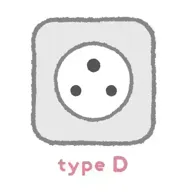
- Shape of Pins: Three round pins arranged in a triangular pattern.
- Voltage and Frequency: 220V and 50Hz, like in Australia.
- Grounding Pin: Yes, there is a grounding pin, which improves safety, especially for high-power devices.
- Adapter Needed: Yes—you will need an adapter to use this plug in Vietnam, as it’s not widely used.
- Usage: Type D plugs are found mainly in older buildings or for specific appliances, and you might encounter them in some older hotels or houses in Vietnam.
Do You Need a Plug Adapter When Traveling to Vietnam?
Region | Common Plug Types | Voltage | Frequency |
Vietnam | A, C, D | 220V | 50 Hz |
Australia | I | 230V | 50 Hz |
Vietnam Power Plug | Voltage Comparison:
- Australia's Voltage:
Australia uses a standard voltage of 230V, with a frequency of 50 Hz. - Vietnam's Voltage:
Vietnam operates on a standard voltage of 220V, with a frequency of 50 Hz.
Standard Socket in Vietnam

In Vietnam, you'll often come across sockets that support Type A, Type C, and Type D Vietnam Power Plugs. These sockets are designed to accommodate a variety of Vietnam Power Plug types, making it easy for both locals and travelers to plug in their devices without needing multiple adapters. Understanding which Vietnam Power Plug types are supported can help you prepare for your trip, ensuring you have the right adapters and your devices remain powered throughout your stay.
Here’s Why It’s Cool:
- Multiple Plug Types: The versatility of Vietnamese sockets is a big win. You’ll find Type A (two flat prongs), Type C (two round prongs), and Type D (three round prongs) sockets, allowing you to plug in devices from a range of countries, especially if you’re traveling with multiple electronics.
- Convenient for Travelers: Type C is the most commonly used, but you may encounter Type A and Type D sockets as well, particularly in older buildings or specific appliances.
- Safe and Secure: The Type D socket, with its three round prongs, is often used for larger appliances and provides extra safety with a grounding pin. This grounding ensures that high-power devices, like air conditioners and large kitchen appliances, are safely plugged in.
- Readily Available: These sockets are commonly found in hotels, airports, cafes, and other public places across Vietnam. If you’re staying in a hotel or traveling in a major city, you’ll likely find a suitable socket without much hassle. This means you can plug in your devices without having to worry about carrying around different adapters.
Types of Travel Adapters for Vietnam
One of the most essential things to consider is how to keep your devices charged when traveling to Vietnam,. With a variety of plug types used in the country, choosing the right travel adapter is crucial. Here’s a breakdown of the different types of travel adapters you’ll need for Vietnam:
Vietnam Power Plug | 1. Vietnam Basic Plug Adapters
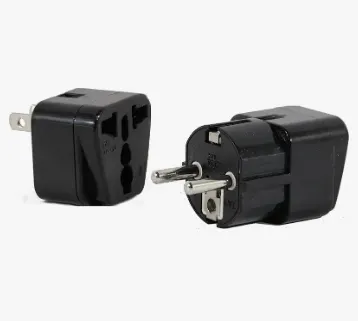
Source from Amazon.com
What it is: A simple solution to plug your non-Vietnamese plugs into Vietnamese sockets.
Vietnam primarily uses Type A, Type C, and Type D plugs, so a basic adapter will allow your foreign plug to fit one of these socket types. These adapters are compact, lightweight, and easy to carry, making them ideal for travelers who don’t have too many devices or only need to charge a phone or camera. It’s a straightforward, no-fuss solution for visitors who just want to connect their devices to Vietnam’s power outlets.
Best for: Short trips with a minimal number of devices—perfect for travelers who just need to power up one or two gadgets.
Vietnam Power Plug | 2. Vietnam Multi-Port Adapters

Source from Amazon.com
What it is: An adapter designed to charge multiple devices at once.
If you’re traveling to Vietnam with multiple gadgets—such as a phone, tablet, laptop, and perhaps a portable power bank—a multi-port adapter is incredibly useful. These adapters often feature several USB ports or multiple sockets, so you can charge multiple devices simultaneously without needing a separate charger for each. This is particularly beneficial for travelers heading to Vietnam who want to streamline their charging process and avoid carrying multiple adapters.
Best for: Long trips, group travel, or families who need to charge several devices at once in Vietnam. Also ideal for tech-savvy travelers who rely on multiple gadgets during their stay.
Vietnam Power Plug | 3. Universal Travel Adapters

Source from Amazon.com
What it is: A versatile adapter that works in multiple countries.
If you’re planning to visit not only Vietnam but also other destinations during your travels, a universal travel adapter is a great investment. These adapters come with interchangeable plug heads for different regions, including Vietnam, North America, Europe, and Asia, making them perfect for frequent travelers. Many universal adapters also support dual voltage (110V/220V), so you won’t have to worry about voltage differences when traveling. They are compact, lightweight, and designed for flexibility, making them a must-have for international travelers.
Best for: Frequent travelers who visit multiple countries, including Vietnam, and want one adapter that works universally for all their charging needs.
Vietnam Power Plug | 4. Compact Travel Adapters
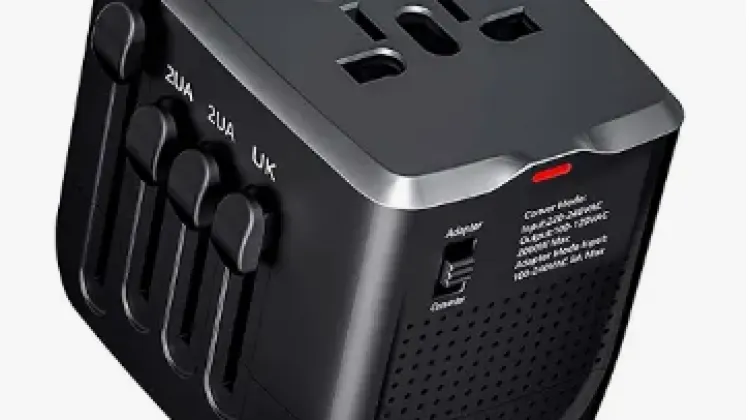
Source from Amazon.com
What it is: A small, lightweight adapter designed for portability.
For travelers heading to Vietnam on a short trip and only needing to charge a couple of devices—like a phone or camera—a compact adapter is the perfect choice. These tiny, portable adapters are easy to pack and take up minimal space in your luggage. They are specifically designed for travelers who don’t want to carry bulky equipment but still need to keep their devices powered up while in Vietnam.
Best for: Short trips or minimal device usage where you only need to charge a couple of gadgets. Ideal for travelers who value portability and simplicity.


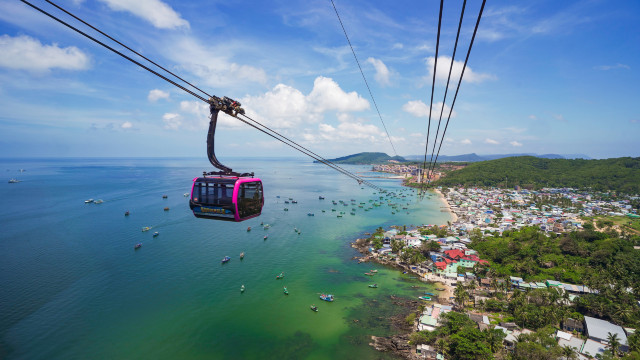
Where to Buy Travel Adapters for Vietnam
When traveling to Vietnam, it's essential to have the right Vietnam Power Plug adapter to keep your devices charged. Luckily, there are plenty of places where you can buy a travel adapter for Vietnam Power Plug. Whether you're looking for a universal adapter or one specifically designed for Vietnam Power Plug types, here’s a guide to where you can find one:
Where to Buy | Adapter Types | Key Features | Price Range |
Need help from Trip.com? Read articles below and figure out immediately! 👇
Stay Connected in Vietnam with an eSIM

1. What is an eSIM Card?
Explanation of eSIM Technology and Its Benefits for Travelers
An eSIM (embedded SIM) is a digital SIM card that is built into your device, allowing you to activate a mobile plan without the need for a physical SIM card. This technology offers several advantages, particularly for travelers. With an eSIM, you can easily switch carriers and manage multiple plans from a single device. Upon arriving in Vietnam, you can instantly activate your mobile plan, avoiding the time-consuming process of searching for and inserting a traditional SIM card.
Comparison with Traditional SIM Cards
Unlike traditional SIM cards, which require physical insertion and can be swapped out, eSIMs provide much more flexibility. Travelers can simply download the eSIM plan directly to their device and switch networks as needed, all without the hassle of handling physical cards. eSIMs also save space in your device, reducing the risk of losing your SIM card while traveling.
2. Trip.com eSIM options for Vietnam
Trip.com offers a convenient eSIM service that provides reliable coverage in Vietnam. You can easily purchase and activate an eSIM through their platform, ensuring you have data and connectivity as soon as you arrive in Vietnam.
Benefits of Using an eSIM in Vietnam
- Instant Activation: Get connected as soon as you land in Vietnam without waiting in line to buy a physical SIM card.
- Flexibility: Switch between local and international plans with ease, or manage multiple plans directly on your device.
- No Need for Physical Cards: No risk of losing or misplacing a SIM card while traveling.
- Seamless Connectivity: Reliable data coverage in major cities and tourist areas across Vietnam.
Booking Your Trip to Vietnam
1. Flight Recommendations
Tips for Booking Affordable Flights to Vietnam
- Be Flexible with Dates: Flight prices to Vietnam can vary greatly depending on the season and day of the week. Use flexible date search features to find the most affordable flights.
- Set Price Alerts: Utilize flight comparison websites to set up price alerts for flights to Vietnam. This will help you track price drops and secure the best deals.
- Book in Advance: For the best rates, try to book your flight to Vietnam several months in advance, especially during peak travel periods like Tet (Vietnamese New Year) or the summer holiday season.
Highlight Special Deals Available on Trip.com
Trip.com offers exclusive deals on flights to Vietnam, so be sure to check their promotions page for limited-time offers and discounts. Here’s a snapshot of some of their best options:
- One way
- Return
- direct cheapest
 SYD15:159h 50mDirectHAN21:05Sydney - Hanoi|Sat, Jan 17|Vietnam Airlines€ 318€ 45731% off31% off€ 457€ 318
SYD15:159h 50mDirectHAN21:05Sydney - Hanoi|Sat, Jan 17|Vietnam Airlines€ 318€ 45731% off31% off€ 457€ 318  SYD15:159h 30mDirectHAN20:45Sydney - Hanoi|Sat, Jan 24|Vietnam Airlines€ 398€ 45713% off13% off€ 457€ 398
SYD15:159h 30mDirectHAN20:45Sydney - Hanoi|Sat, Jan 24|Vietnam Airlines€ 398€ 45713% off13% off€ 457€ 398 SYD21:5014h 30m1 stopHAN08:20Sydney - Hanoi|Sun, Feb 22|AirAsia X€ 156€ 45766% off66% off€ 457€ 156
SYD21:5014h 30m1 stopHAN08:20Sydney - Hanoi|Sun, Feb 22|AirAsia X€ 156€ 45766% off66% off€ 457€ 156 SYD1:00 PM3h 5mDirectHAN2:00 PMSydney - Hanoi|Sat, Dec 27|Vietnam AirlinesFind more flightsFind more flights
SYD1:00 PM3h 5mDirectHAN2:00 PMSydney - Hanoi|Sat, Dec 27|Vietnam AirlinesFind more flightsFind more flights
Displayed flight fares from ${{departCityName}} to ${{arrivalCityName}} are based on average prices across airlines for the next 3 months, according to the latest Trip.com database.
2. Hotel Recommendations in Vietnam
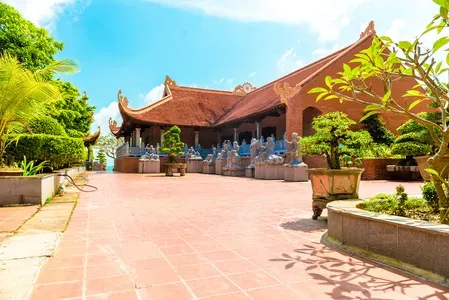
Explore the Best Hotels in Vietnam’s Top Cities! Whether you're looking for luxury, comfort, or a budget-friendly stay, we’ve got you covered! From Hanoi’s historical charm to Ho Chi Minh City’s vibrant energy, here’s where to stay in Vietnam’s top hotels.
From now until stock last, you can enjoy up to 8% off hotel deals on Trip.com when you register as a member on desktop or app!
FAQs about Vietnam Power Plug
What type of power plugs are used in Vietnam?
Vietnam primarily uses Type A, Type C, and Type D power plugs. Type A: Two flat parallel pins. Type C: Two round pins. Type D: Three round pins in a triangular formation.What is the voltage in Vietnam?
Vietnam operates on a 220V voltage with a frequency of 50 Hz.Do I need a plug adapter for Vietnam?
Yes, if your devices have a different plug type (such as Type I or Type G used in countries like Australia, the UK, or the US), you will need a plug adapter to fit into the Vietnamese sockets. Voltage converters may also be necessary if your device does not support 220V input.Will my electrical devices work in Vietnam?
If your device supports dual voltage (110-240V), you can use it in Vietnam without a voltage converter. Just bring a plug adapter for the right socket type. If your device only supports 110V, you will need a voltage converter in addition to a plug adapter.Are there any specific safety concerns when using electrical appliances in Vietnam?
Vietnam’s electrical systems are generally safe, but you should always check that your devices are compatible with the voltage and frequency before use. Additionally, using a grounded adapter for appliances that require grounding can help minimize electrical risks.Can I find plug adapters easily in Vietnam?
Yes, plug adapters are widely available in electronics stores, tourist shops, airports, and hotels in major cities like Hanoi, Ho Chi Minh City, and Da Nang.What should I do if I forget to bring a plug adapter?
If you forget to bring a plug adapter, you can easily purchase one at local shops, airports, or supermarkets in Vietnam. Major tourist areas will also have adapters available for sale.Can I charge my phone or laptop in Vietnam?
Yes, you can charge your phone, laptop, or other electronic devices in Vietnam, provided that you have the correct plug adapter and your device is compatible with the 220V voltage and 50 Hz frequency. Most modern electronics like smartphones and laptops are dual voltage and can handle the power requirements in Vietnam.




 30792 booked
30792 booked